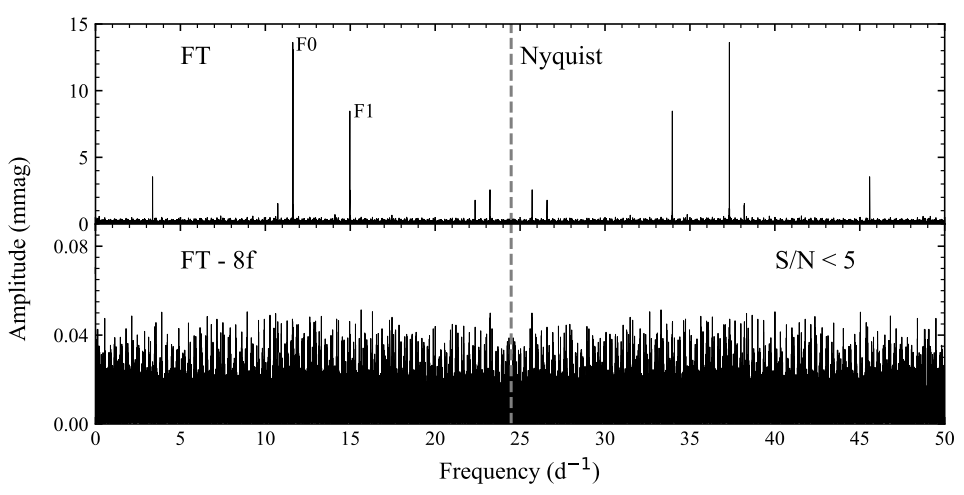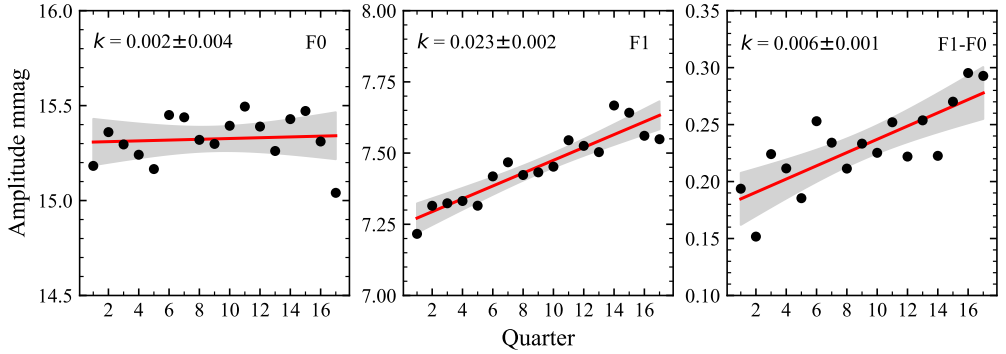

A Low-amplitude Double-mode Delta Scuti Star with Amplitude Modulation
The Delta Scuti stars show rich oscillation modes in observations, both of radial and non-radial oscillation are detected. Different modes show different propagation behaviors in the star and reflect different properties of the stellar structure, thus Delta Scuti stars are very valuable targets for asteroseismology.
Researchers from the Optical Astronomy Laboratory of Xinjiang Astronomical Observatory have confirmed that KIC 12602250 is a low-amplitude double-mode Delta Scuti Star with Amplitude Modulation. It is uncommon for a low-amplitude Delta Scuti star pulsate in a purely radial double mode. The results are published in the Astronomical Journal (AJ, 2021, 162, 48).

Fourier amplitude spectra and the pre-whitening process for the light curve of KIC 12602250.

The amplitude variations of F1 and F1-F0 as a function of time. The red lines represent the linear fits of those frequencies using emcee.
Article link:http://iopscience.iop.org/article/10.3847/1538-3881/ac082b
Contact: LV Chenglong
Xinjiang Astronomical Observatory, Chinese Academy of Sciences
Email: lvchenglong@xao.ac.cn
Attachment Download: